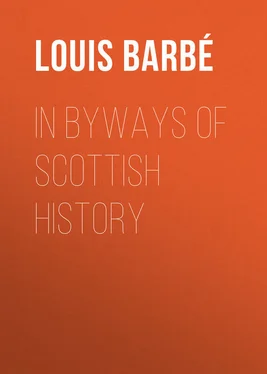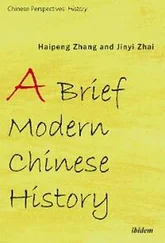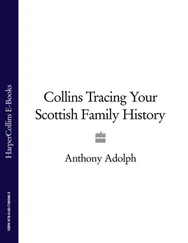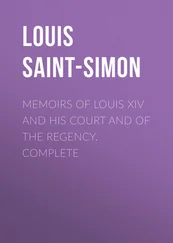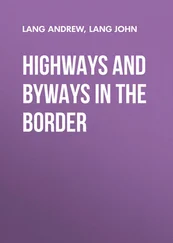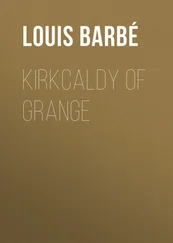Louis Barbé - In Byways of Scottish History
Здесь есть возможность читать онлайн «Louis Barbé - In Byways of Scottish History» — ознакомительный отрывок электронной книги совершенно бесплатно, а после прочтения отрывка купить полную версию. В некоторых случаях можно слушать аудио, скачать через торрент в формате fb2 и присутствует краткое содержание. Жанр: foreign_antique, foreign_prose, на английском языке. Описание произведения, (предисловие) а так же отзывы посетителей доступны на портале библиотеки ЛибКат.
- Название:In Byways of Scottish History
- Автор:
- Жанр:
- Год:неизвестен
- ISBN:нет данных
- Рейтинг книги:4 / 5. Голосов: 1
-
Избранное:Добавить в избранное
- Отзывы:
-
Ваша оценка:
- 80
- 1
- 2
- 3
- 4
- 5
In Byways of Scottish History: краткое содержание, описание и аннотация
Предлагаем к чтению аннотацию, описание, краткое содержание или предисловие (зависит от того, что написал сам автор книги «In Byways of Scottish History»). Если вы не нашли необходимую информацию о книге — напишите в комментариях, мы постараемся отыскать её.
In Byways of Scottish History — читать онлайн ознакомительный отрывок
Ниже представлен текст книги, разбитый по страницам. Система сохранения места последней прочитанной страницы, позволяет с удобством читать онлайн бесплатно книгу «In Byways of Scottish History», без необходимости каждый раз заново искать на чём Вы остановились. Поставьте закладку, и сможете в любой момент перейти на страницу, на которой закончили чтение.
Интервал:
Закладка:
Before closing our remarks on Mary Stuart's scholarship and literary acquirements we would dwell for a moment on the subject of her handwriting, for that too has been made the subject of admiring comment by some of her biographers. Con has recorded that "she formed her letters elegantly and, what is rare in a woman, wrote swiftly". 31Some reason for his admiration may be found in the fact that Mary had adopted what Shakespeare styles "the sweet Roman hand", which at that time was only beginning to take the place of the old Gothic, and, in Scotland particularly, had all the charm of a fashionable novelty. The specimen now before us shows a bold, rather masculine hand, of such size that five short words – "mon linge entre mes fammes" – fill a line six inches long. The letters are seldom joined together, and the words are scattered over the page with untutored irregularity and disregard for straight lines. On the whole we cannot but allow the force of Pepys' exclamation on being shown some of the Queen's letters: "Lord! How poorly methinks they wrote in those days, and on what plain uncut paper!" 32
Our sketch of Mary Stuart would not be complete if we limited ourselves to the more serious side of her character merely. If she did not deserve the reputation for utter thoughtlessness and frivolity which some of her puritanical contemporaries have given her, she was undoubtedly fond of amusements. The memoirs and correspondence of the time often show her seeking recreation in popular sports and pastimes; indeed, Randolph describes life at the Scottish Court for the first two years after her return from France as one continual round of "feasts, banquetting, masking, and running at the ring, and such like". 33It was to Mary, as Knox testifies, that the introduction into Scotland of those primitive dramatic performances known as Masques or Triumphs was due. They soon became so popular that they formed the chief entertainment at every festival. The Queen herself and her attendants, particularly the four Marys, often took part in them, either acting in mere dumb show or reciting the verses which the elegant pen of Buchanan supplied, and singing the songs which Rizzio composed, and of which the melodies may very possibly be those which, wedded to more modern verse, are still popular amongst the Scottish peasantry. Not only were these masques performed in the large halls of the feudal castles, but in the open air also, near the little lake at the foot of Arthur's Seat. It may cause some astonishment at the present day to find not only the maids of honour, but even the Queen herself, assuming the dress of the other sex in these masquerades. Yet the Diurnal of Occurrents 34records, without expressing either indignation or even astonishment at the fact, that "the Queen's Grace and all her Maries and ladies were all clad in men's apparel" at the "Maskery or mumschance" given one Sunday evening in honour of the French Ambassador.
Like her cousin of England, Mary was fond of dancing, and, as her Latin biography informs us, showed to great advantage in it. 35From a passage quaintly noted as "full of diversion" in Sir James Melville's Memoirs, we learn that the knight being pressed by Queen Elizabeth to declare whether she or his own sovereign danced best, answered her with courtly ambiguity that "the Queen dancit not so hich and so disposedly as she did". 36In reply to the same royal enquirer he also stated that Mary "sometimes recreated herself in playing upon the lute and virginals", and that she played "reasonably for a queen", not so well, however, as Elizabeth herself. 37We gather from Con 38and Brantôme that her voice was well trained, and that she sang well.
The indoor amusements in favour at Holyrood were chess, which James VI condemned as "over wise and philosophic a folly", 39tables, a game probably resembling backgammon, and cards. That these last were not played for "love" merely, is shown by an entry in the Lord Treasurer's accounts of "fyftie pundis" for Her Majesty "to play at the cartis". 40Puppets or marionettes were also in great vogue. A set of thirty-eight, together with a complete outfit of "vardingaills", "gownis", "kirtillis", "sairkis slevis", and "hois", is mentioned in an inventory of the time, where we see these "pippenis" – an old Scottish corruption of the French "poupine" – dressed in such costly stuffs as damask brocaded with gold, cloth of silver, and white silk. 41
Quieter employment for the leisure hours of the Queen and her ladies was supplied by various kinds of fancy-work, amongst which knitting and tapestry are particularly mentioned. To the latter she devoted much of her time, both at Lochleven, where she requested to be allowed "an imbroiderer, to draw forth such work as she would be occupied about", 42and in England. Whilst she was at Tutbury, Nicholas White once asked her how she passed her time within doors when the weather cut off all exercises abroad. She replied "that all that day she wrought with her needle, and that the diversity of the colours made the work seem less tedious, and continued so long at it till very pain made her to give over… Upon this occasion she entered into a pretty disputable comparison between carving, painting, and working with the needle, affirming painting, in her own opinion, for the most commendable quality." 43
At his interview with Elizabeth, Sir James Melville was asked what kind of exercises his Queen used. He answered, that when he received his dispatch, the Queen was lately come from the Highland hunting. Her undaunted behaviour on this occasion is recorded by an eyewitness, Dr. William Barclay of Gartley, who tells us that she herself gave the signal for letting the hounds loose upon a wolf, and that in one day's hunting three hundred and sixty deer, five wolves, and some wild goats were slain. 44
In common with her father, who took great pains to introduce "ratches" or greyhounds and bloodhounds into Scotland, and with her great-grandson, Charles II, who gave his name to a breed of spaniels, Mary Stuart shared a great fondness for dogs. In her happier days she always possessed several, which she entrusted to the keeping of one Anthone Guedio and a boy. These canine pets were provided with a daily ration of two loaves, and wore blue velvet collars as a distinguishing badge. 45During her captivity, her dogs were amongst her most faithful companions. Writing from Sheffield to Beton, Archbishop of Glasgow, she said: "If my uncle, the Cardinal of Guise, has gone to Lyons, I am sure he will send me a couple of pretty little dogs, and you will buy me as many more; for, except reading and working, my only pleasure is in all the little animals that I can get. They must be sent in baskets well-packed, so as to keep them warm." 46The fidelity of one of these dumb friends adds to the pathos of the last scene of her sad history. "One of the executioners," says a contemporary report, "pulling off her clothes, espied her little dog which was crept under her clothes, which would not be gotten forth but by force, and afterwards would not depart from the dead body, but came and lay betwixt her head and shoulders, a thing diligently noted." 47
In recording one of his interviews with Queen Mary, Knox gives us information concerning another of the sports with which she beguiled her time, for he tells us that it was at the hawking near Kinross that she appointed him to meet her. 48Archery, too, seems to have been a favourite amusement. She had butts both at Holyrood and St. Andrews. Writing to Cecil in 1562, and again in 1567, Randolph informs him that the Queen and the Master of Lindsay shot against Mary Livingston and the Earl of Murray; and that, in another match, the Queen and Bothwell won a dinner at Tranent from the Earl of Huntley and Lord Seton. 49Neither did she neglect the "royal game", for one of the charges brought against her and embodied in the articles given in by the Earl of Murray to Queen Elizabeth's commissioners at Westminster, stated that a few days after Darnley's murder "she past to Seytoun, exercing hir one day richt oppinlie at the feildis with the pallmall and goif".
Читать дальшеИнтервал:
Закладка:
Похожие книги на «In Byways of Scottish History»
Представляем Вашему вниманию похожие книги на «In Byways of Scottish History» списком для выбора. Мы отобрали схожую по названию и смыслу литературу в надежде предоставить читателям больше вариантов отыскать новые, интересные, ещё непрочитанные произведения.
Обсуждение, отзывы о книге «In Byways of Scottish History» и просто собственные мнения читателей. Оставьте ваши комментарии, напишите, что Вы думаете о произведении, его смысле или главных героях. Укажите что конкретно понравилось, а что нет, и почему Вы так считаете.
